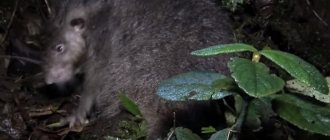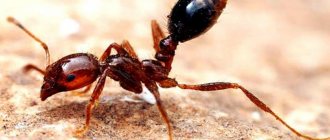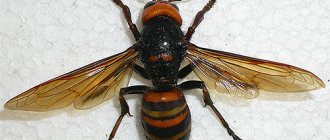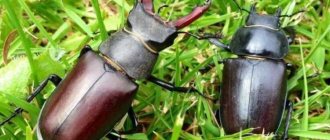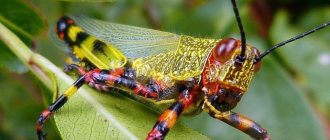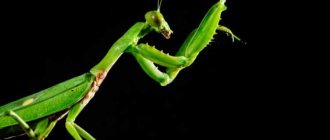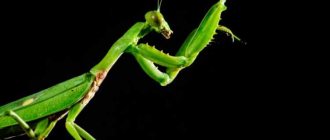Rats are the largest representatives of rodents in the world. On average, their body length is about twenty centimeters. But there are such giant specimens, the size of which can reach the size of a small dog.
In fact, an animal of such enormous size could easily pass for the monster so beloved by horror film makers.
Some species of these mammals are found everywhere, others are on the verge of extinction, and some species of rodents were recently discovered by zoologists.
Large specimens of animals can often be found among pets. They quickly become people's favorites and get used to them themselves. However, their cadaverous smell becomes a real problem and is not so easy to get rid of. But wild giant rats are very dangerous for humans.
We bring to your attention a rating, as well as photographs of the 10 largest rats known to mankind.
Gray rat
Pasyuki are distributed everywhere on all continents of the world, except for northern latitudes and Antarctica. It is the largest representative of the mouse family living in the Russian Federation. Its dimensions are up to 25 cm.
It is the scary gray rat that is a constant character in horror films. Mutant bastards swarming in the subway, sewers full of aggressive rodents – these are directors’ favorite subjects that have tickled the nerves of viewers for many years.
There are also a large number of myths and legends associated with pasyuk. On the Internet you can find stories about specimens weighing 18 kg, allegedly encountered during expeditions to Chernobyl. The gigantic size is explained by the effect of radiation.
Or the “true” stories of Moscow metro drivers who encounter hungry monsters of incredible size in the tunnels. Moreover, they are supposedly powered by insulation from high voltage cables.
Moscow with its underground communications, secret catacombs, old Kremlin towers and the constant rat-monsters swarming there continue to attract the attention of ordinary people with their incredibleness, and this news is increasingly surrounded by new details.
To be fair, we note that the fantasies of the authors of these myths are not supported by anything other than the desire to earn popularity and attract attention to their publications.
Justified and unfounded fears
More recently, some 3 decades, articles appeared in Moscow newspapers about giant rats that were encountered in the Moscow metro. The articles claimed that the rats appeared on the surface, where they attacked passersby. These rats were comparable in size to dogs, and had red eyes, yellow plaque on their teeth and a wolfish grin. In other words, terrible monsters and quite aggressive.
With the advent of the Internet, videos of horrific-looking rodents have increasingly begun to appear on social networks. The Chinese presented a photo of a rat being held by its tail. It is believed to have been the largest mammal of its species, weighing several kilograms.
Thanks to the Internet, many people began to develop phobias towards this type of rodent, both justified and unfounded. Who would want to meet a giant rat on their way, and a hungry one at that? In fact, everything is not so simple and ambiguous, since there are different types of rats, and there are also animals that look like rats.
Potoroo
This is a fairly large species of the Kangaroo rat family. The size of its body is from 25 to 41 cm. Potoroo are nocturnal animals. During the day they live in shallow burrows. They feed on various plants, fungi and insects. Like all animals of the marsupial order, female potoroos have a well-developed brood pouch, in which they carry their young for four months.
Externally, the animals are similar to the musky kangaroo rat. The only difference is the presence of long hairs on the tail of the potoroo. The animal's long, developed hind legs, as well as its movement by jumping, make it look like a kangaroo.
Potoroo can be found in Australia, as well as on the island of Tasmania.
Musk kangaroo | 35 centimeters
The musk kangaroo (Tsepkonog) is similar in appearance to an ordinary rat. All limbs of the flailfoot are proportional and have weak, small claws. The maximum size of the musk kangaroo's body can reach 35 centimeters with a tail length of 12 cm. Tenaciopods prefer to live in dense thickets near water bodies. The musk smell characteristic of the animals became the reason for the name of the species - musky kangaroo. Females have a brood pouch where they carry their young for several months. The animal can move nimbly on the surface of the earth and climb trees. They choose insects and worms as food, but can also eat berries and root vegetables.
Bamboo
One of the largest species of burrowing rodents. Lives in Southeast Asia. Adults reach forty-eight centimeters in length. They live in burrows underground. They feed on bamboo roots, shoots, and various plants.
You can find information online that a huge bamboo giant rodent was caught in China, weighing eleven kilograms! The rat caught by a resident of the city of Fuzhou had huge three-centimeter fangs and a tail length of thirty centimeters. It is curious that this fact was not recorded by either the Guinness Book of Records or other similar authoritative publications.
Which breed is better to choose?
Given such a variety of rat breeds, novice breeders often wonder what type of pet to buy. To make the right choice, you must be guided by the following criteria:
- Price . Among decorative rats there are both expensive and affordable breeds. If the financial situation does not allow you to pay a large sum for a rat, it is better to choose the classic option - the standard.
- Animal size . Breeders who prefer compact rodents should pay attention to varieties such as Dumbo or Manx. If large pets are in favor, the ideal option would be a standard or satin breed.
- Presence of allergic reactions to wool . An ideal option for allergy sufferers would be the Sphinx or Fuzz. Although the latter have fur, it is very short and practically does not grow. But it is better for breeders prone to allergies to avoid Double Rex and Pseudo-Sphinx rats - rodents of these breeds shed heavily.
- Appearance . Quite often, when choosing a decorative rat, buyers focus solely on appearance. The main thing here is to choose the animal that you like most.
- Lifespan . In general, rats do not live long - about 3 years. However, representatives of some breeds do not live to this age due to health problems, for example, rexes or sphinxes. Among the long-livers are Dumbo, Husky, and Fuzz.
- Unpretentiousness to living conditions . If you plan to purchase a rat that is not very sensitive to external conditions, it is better to purchase a standard or albino breed. Among the demanding rodents are sphinxes, fuzzes, and rexes.
The types and breeds of rats are amazing in their diversity. And each variety has its own characteristics, advantages and disadvantages. Therefore, before buying a pet you need to weigh the pros and cons. After all, a rat is not only a pet, but also a faithful friend for all family members.
Red kangaroo
This small mammal belongs to the rat kangaroo family. It is so called due to its reddish-brown color. Marsupials are found in Australia and are a rare species. In size, the large rat rodent kangaroo resembles a rabbit; in all other respects, the animal is not much different from a kangaroo. The length of its body is up to 55 cm.
Being the only species of its genus, it is the largest of all kangaroo rats. Their length can be up to half a meter, and their tail can be forty centimeters. Feeds on plant foods.
External resemblance to other animals
It just so happens in our time, especially with the advent of the Internet, that many take photographs of animals that look like rats and post these photos on social networks in the form of some kind of sensation.
Capybara
If you look closely at this, the largest rodent in the world, you might think that this beast is nothing more than a mixture of a wild boar, a dog and a rat. A person who does not know this animal may be very frightened, but in fact the capybara has a very peaceful character. The weight of the animal is about 65 kg, with a body length of up to 1 m 35 cm. There are known cases when similar rodents weighing more than 90 kg were encountered.
Beavers
Beavers also belong to the family of rodents and are found in many places, especially on small rivers, where they build dams. A beaver can easily be confused with a huge rat, both in the shape of its muzzle and body. At the same time, the tail has a flattened shape, similar to a wide oar. Individuals grow up to 50 cm in length and gain weight of more than 30 kg. It is in second place among the “largest rats in the world.”
Interesting fact! A beaver weighing almost 350 kg and up to 2 and a half meters long was discovered in North America. However, it is unknown how old the beaver was and what led to such genetic changes.
Nutria
Nutria is bred artificially on special farms or in private farms for two reasons. Firstly, nutria has valuable fur, so winter outerwear, hats and other accessories are made from it. Secondly, nutria has valuable dietary meat. Associated with the nutria rat due to the shape of the muzzle, as well as due to the teeth. If you don’t know, nutria can easily be confused with a large rat. It can weigh up to 12 kg, growing up to 60 cm in length.
Marmot-bayrak
This animal lives in fields, in natural conditions. With the onset of winter, the animal hibernates, so it is not visible in winter. It grows up to 70 cm in length, gaining weight up to 10 kg. As a rule, such a weight is typical in the fall, when the animal begins to stock up on nutrients for the winter. They prefer to be away from humans and, in case of danger, quickly hide in shelter (in holes).
Modern human activity leads to the fact that this harms the normal life of many living beings, including rats, although they quickly adapt to an unfavorable environment. Increased radiation, an abundance of chemistry, as well as the creation of genetically modified products - all this is a trigger to change the structures of gene chains responsible for the growth of living beings. Therefore, in our time, there is a great risk that giant rats may appear that can threaten human life. Unfortunately, this is the price to pay for a thoughtless attitude towards nature, which often leads to environmental disasters.
Most likely, the articles that occasionally appear in the press are intended to remind a person what awaits him if he continues to behave this way. Nature is a rather subtle matter that will not tolerate outside interference.
caught a giant rat in Africa!!!
Gambian marsupial
It is also called the hamster rat. The name of this subspecies comes from the animal’s ability to carry food in its cheek pouches, like a hamster. Lives on the African continent. Giant rodents, the length of individual individuals of which can reach up to ninety centimeters, have a body weight of no more than one and a half kilograms.
Gambian rats tend to be pets. They are also easy to train, which makes it possible for them to be used by special services when searching for explosives.
And dessert!
What to feed a decorative rat so that it does not get sick and lives a long time, delighting its owners?! The diet should be balanced and varied:
- chicken eggs, fish, seafood, meat - only boiled,
- vegetables (legumes, cabbage, radishes and turnips are prohibited, potatoes - only boiled),
- fruits, berries - give without seeds and with caution, citrus fruits - prohibited,
- dairy products - sour cream, milk and condensed milk are prohibited, it is better to please your pet with fermented milk treats,
- Store-bought sweets, baked goods, lard, sausages are prohibited to give to decorative rats.
Feed your pet 3-4 times a day if it is a teenager. For adult rats, two feedings per day are sufficient. Be sure to remove any leftover food from the cage to prevent it from spoiling. Make sure there is clean water in the drinking bowl every day.
Decorative rats are becoming increasingly popular in the ranking of pets: smart, active, affectionate, sociable - interesting and easy to keep, loyal and easily bond with the owner.
Woolly rat Bosavi
The biggest rat in the world. It was discovered in 2009 by researchers from England on the island of Papua New Guinea in the crater of the inactive Bosavi volcano. This is where its second name came from – the Papuan rat. The length of the mammal exceeds ninety centimeters, and its weight is approximately one and a half kilograms.
Outwardly, it is no different from its counterparts, except for its dimensions. It is noteworthy that the animals turned out to be absolutely peaceful and were not afraid of people.
You can learn about effective poisons from this article.
Rat Islands
The Aleutian Islands are just one example of habitat for so-called invasive rats. About 90 percent of the world's islands have been overrun by rodents - stowaways brought in by merchant ships. This fact spells disaster for local fauna, especially birds. Fortunately, although rats have long enjoyed their “vacation” on the islands, in 2010, after many years of focused efforts to preserve the local fauna, the rat population was reduced significantly, which gave other species of animals and birds a chance to fully develop and live. Birds are now beginning to return to feeding and nesting areas previously occupied by rats, and are successfully producing offspring.
